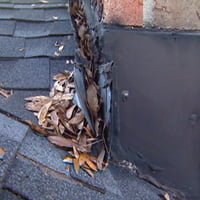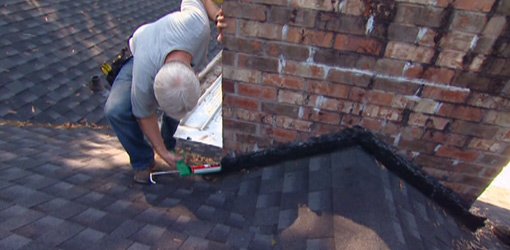How does healthy eating affect mental and emotional health?
We all know that eating right can help you maintain a healthy weight and avoid certain health problems, but your diet can also have a profound effect on your mood and sense of wellbeing. Studies have linked eating a typical Western diet—filled with processed meats, packaged meals, takeout food, and sugary snacks—with higher rates of depression, stress, bipolar disorder, and anxiety. Eating an unhealthy diet may even play a role in the development of mental health disorders such as ADHD, Alzheimer’s disease, and schizophrenia, or in the increased risk of suicide in young people.
Eating more fresh fruits and vegetables, cooking meals at home, and reducing your intake of sugar and refined carbohydrates, on the other hand, may help to improve mood and lower your risk for mental health problems. If you have already been diagnosed with a mental health problem, eating well can even help to manage your symptoms and regain control of your life.
While some specific foods or nutrients have been shown to have a beneficial effect on mood, it’s your overall dietary pattern that is most important. That means switching to a healthy diet doesn’t have to be an all or nothing proposition. You don’t have to be perfect and you don’t have to completely eliminate foods you enjoy to have a healthy diet and make a difference to the way you think and feel.
Healthy eating tip 1: Set yourself up for success
To set yourself up for success, think about planning a healthy diet as a number of small, manageable steps—like adding a salad to your diet once a day—rather than one big drastic change. As your small changes become habit, you can continue to add more healthy choices.
- Prepare more of your own meals. Cooking more meals at home can help you take charge of what you’re eating and better monitor exactly what goes into your food.
- Make the right changes. When cutting back on unhealthy foods in your diet, it’s important to replace them with healthy alternatives. Replacing dangerous trans fats with healthy fats (such as switching fried chicken for grilled fish) will make a positive difference to your health. Switching animal fats for refined carbohydrates, though (such as switching your breakfast bacon for a donut), won’t lower your risk for heart disease or improve your mood.
- Simplify. Instead of being overly concerned with counting calories, think of your diet in terms of color, variety, and freshness. Focus on avoiding packaged and processed foods and opting for more fresh ingredients.
- Read the labels. It’s important to be aware of what’s in your food as manufacturers often hide large amounts of sugar or unhealthy fats in packaged food, even food claiming to be healthy.
- Focus on how you feel after eating. This will help foster healthy new habits and tastes. The more healthy food you eat, the better you’ll feel after a meal. The more junk food you eat, the more likely you are to feel uncomfortable, nauseous, or drained of energy.
- Drink plenty of water. Water helps flush our systems of waste products and toxins, yet many people go through life dehydrated—causing tiredness, low energy, and headaches. It’s common to mistake thirst for hunger, so staying well hydrated will also help you make healthier food choices.
Healthy eating tip 2: Moderation is key
Key to any healthy diet is moderation. But what is moderation? In essence, it means eating only as much food as your body needs. You should feel satisfied at the end of a meal, but not stuffed. Moderation is also about balance. Despite what fad diets would have you believe, we all need a balance of protein, fat, fiber, carbohydrates, vitamins, and minerals to sustain a healthy body.
For many of us, moderation also means eating less than we do now. But it doesn't mean eliminating the foods you love. Eating bacon for breakfast once a week, for example, could be considered moderation if you follow it with a healthy lunch and dinner—but not if you follow it with a box of donuts and a sausage pizza. If you eat 100 calories of chocolate one afternoon, balance it out by deducting 100 calories from your evening meal. If you're still hungry, fill up with extra vegetables.
- Try not to think of certain foods as “off-limits.” When you ban certain foods or food groups, it is natural to want those foods more, and then feel like a failure if you give in to temptation. Start by reducing portion sizes of unhealthy foods and not eating them as often. As you reduce your intake of unhealthy foods, you may find yourself craving them less or thinking of them as only occasional indulgences.
- Think smaller portions. Serving sizes have ballooned recently. When dining out, choose a starter instead of an entree, split a dish with a friend, and don't order supersized anything. At home, visual cues can help with portion sizes–your serving of meat, fish, or chicken should be the size of a deck of cards and half a cup of mashed potato, rice, or pasta is about the size of a traditional light bulb. If you don't feel satisfied at the end of a meal, add more leafy green vegetables or round off the meal with fruit.
- Take your time. Stop eating before you feel full. It actually takes a few minutes for your brain to tell your body that it has had enough food, so eat slowly.
- Eat with others whenever possible. As well as the emotional benefits, this allows you to model healthy eating habits for your kids. Eating in front of the TV or computer often leads to mindless overeating.
Healthy eating tip 3: Reduce sugar
Aside from portion size, perhaps the single biggest problem with the modern Western diet is the amount of added sugar in our food. As well as creating weight problems, too much sugar causes energy spikes and has been linked to diabetes, depression, and even an increase in suicidal behaviors in young people. Reducing the amount of candy and desserts you eat is only part of the solution as sugar is also hidden in foods such as bread, cereals, canned soups and vegetables, pasta sauce, margarine, instant mashed potatoes, frozen dinners, low-fat meals, fast food, and ketchup. Your body gets all it needs from sugar naturally occurring in food so all this added sugar just means a lot of empty calories.
Tips for cutting down on sugar
- Slowly reduce the sugar in your diet a little at a time to give your taste buds time to adjust and wean yourself off the craving.
- Avoid sugary drinks. Try drinking sparkling water with a splash of fruit juice instead.
- Don’t replace saturated fat with sugar. Many of us make the mistake of replacing healthy sources of saturated fat, such as whole milk dairy, with refined carbs or sugary foods, thinking we’re making a healthier choice. Low-fat doesn’t necessarily mean healthy, especially when the fat has been replaced by added sugar to make up for loss of taste.
- Avoid processed or packaged foods like canned soups, frozen dinners, or low-fat meals that often contain hidden sugar that quickly surpasses the recommended limit.
- Be careful when eating out. Most gravy, dressings and sauces are also packed with salt and sugar, so ask for it to be served on the side.
- Eat healthier snacks. Cut down on sweet snacks such as candy, chocolate, and cakes. Instead, eat naturally sweet food such as fruit, peppers, or natural peanut butter to satisfy your sweet tooth.
- Check labels and choose low-sugar products.
You can read similar articles online at www.echomeinspection.com/our-blog.html

